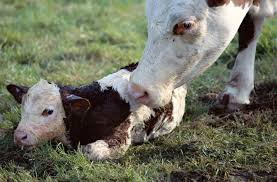Produção de Gado em Inglês: Fases Técnicas do Breeding ao Slaughter
- Micael Daher Jardim
- 23 de jun.
- 2 min de leitura
Atualizado: 2 de jul.
Dominar o vocabulário técnico do agro em inglês é essencial para profissionais que atuam no mercado global. Neste conteúdo, você vai aprender as principais fases da produção de gado, com termos usados internacionalmente e suas definições.
Conhecer essas fases em inglês é fundamental para quem atua em exportação, consultorias, eventos internacionais ou faz negócios no setor de proteína animal. Dominar o vocabulário técnico permite comunicar-se com clareza, participar de negociações e acompanhar as melhores práticas globais.
Cattle Production: Key Phases from Breeding to Slaughter
Cattle production follows a structured cycle designed to maximize animal growth, health, and meat quality. Understanding each phase is essential for efficient herd management and meeting market requirements. Below are the main stages of cattle production and their technical aspects.
Breeding: phase where cows and bulls are mated, through natural breeding or artificial insemination. Goal is to produce calves and improve genetics.

Calving: the birthing process (parturition), when cows give birth to calves. Calving season requires close management to reduce calf mortality.

Nursing Phase: period when calves feed on the mother’s milk, essential for early nutrition, immunity, and healthy development. This phase continues until weaning.

Weaning: separation of calves from their mothers, usually between 6 and 8 months. This reduces nutritional stress on the cow and starts the calf’s independent development.

Backgrounding or Growing Phase: period after weaning focused on controlled weight gain, frame development, and muscle growth, preparing the animal for finishing.

Finishing or Fattening: final phase before slaughter, aimed at rapid weight gain and improving marbling (intramuscular fat). Animals can be finished in feedlots or on pasture (pasture finishing).

Slaughter: animals are harvested at target weight with the desired carcass traits, following animal welfare and meat quality standards. These traits include factors like carcass weight, fat thickness, muscle development (conformation), and marbling.



